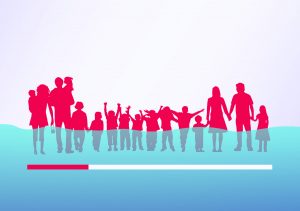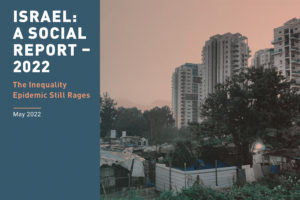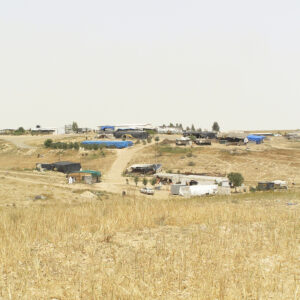More than one-fourth of Israeli households live in poverty or near poverty. A study finds families in near poverty not much better off than families in poverty
From the time that countries first established a poverty line, it was clear that the cut-off point was arbitrary and that those living below the poverty line did not necessarily include the entire population in distress. Mollie Orshansky, who at the beginning of the 1960s established a measure of poverty for the United States, contended that one should look not only at those living below the poverty line but also at those whose incomes placed them slightly above the line, who were still a long ways from having “a reasonable minimum” income. She described those persons as living in near poverty. And indeed, the US Census Bureau publishes annual figures on persons living in near poverty, defined as the stratum whose median income is between 100% and 125% of the poverty line.
This study focuses attention on a social stratum that does not receive public attention. As is well known, Israel’s poverty rate is very high, among the highest among western countries. However, as the study indicates, the situation of persons living in near poverty is not much better. The study also recommends broadening assistance to households living in near poverty, beyond the social benefits of the National Insurance Institute, so that these households will be able to benefit from services that today are accessible only to persons with higher incomes, for example, more generous public financing of health and education services, in order to eliminate the expense of purchasing them out of pocket.
Major Findings:
• The study examines the stratum of households living in near poverty – a stratum whose income lies between the poverty line and 25% above it. In 2016, the poverty rate among Israeli households was 18.5% and the rate of near poverty was 8.1%. Thus, 26.6% of all Israeli households were poor or nearly poor.
• In 2016, nearly half – 49.2% — of Arab households were below the poverty line, compared with 13.2% of Jewish households. The difference between the two groups was smaller with regard to near poverty: 13.5% for Arab households, compared with 7.2% for Jewish households.
• In 2016, among the Jewish population, the group with the highest poverty rate was that of Ethiopian immigrants – 22.8%. Regarding near poverty, the group with the highest rate was recent (from 1990) immigrants from the former Soviet Union: 12.1%. Second-generation Ashkenazim had the lowest rate of households living in near poverty: 4.4%.
• Looking at the population of Israel as a whole, 35% of households are headed by women (headed = adult working greatest number of hours). This proportion remained stable between 2003 and 2016. In contrast, women-headed households comprised 43.1% of households living in poverty and 42.9% of households living in near poverty.
• Between 2003 and 2016, the percentage of households headed by salaried or self-employed persons living below the poverty line or in near poverty increased. During the same period, the percentage of households with two or more bread winners living in poverty or near poverty nearly doubled.
• Between 2003 and 2016, the percentage of poor households headed by a person with college studies grew from 13% to 22.1% — a steep increase of 70%. Similar increases were found for persons living in near poverty: from 15.8% to 26.7%.
• Social benefits, which constituted 62% of the income of households living in poverty in 2003, decreased to 43.8% in 2016. A similar decline occurred for households living in near poverty – from 42% in 2003 to 30% in 2016. The decline was nearly 30% for both groups.
• The study examined the expenditure of households living in near poverty for four services: supplementary health insurance marketed by the health funds, commercial health insurance sold by insurance companies, formal education and informal education. In general the expenditure of households living in near poverty was closer to that of households in poverty than to those of households in the lower middle class.
The public debate in Israel centers on two main issues:
a. Where is the poverty line? The study points to the fact that the present poverty line excludes a stratum whose situation is essentially no different from that of households defined as poor.
b. How can poverty be decreased? The study indicates that raising households above the poverty line may not be sufficient, for households just above the poverty line share many characteristics with those living below it. At the same time, the findings spotlight policy areas in which changes can prevent households from falling into poverty and at the same time assure them access to services enjoyed by the middle class, like a universal basket of informal education services publicly financed and a more generous basket of health services.
The study was funded by the National Insurance Institute and MAZON: A Jewish Response to Hunger.






